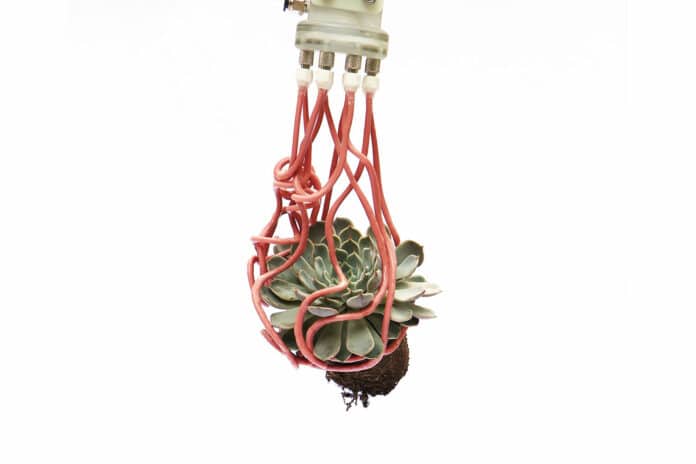Grasping, in both biological and engineered mechanisms, can be highly sensitive to the gripper. Most of today’s robotic grippers rely on embedded sensors, complex feedback loops, or advanced machine learning algorithms, combined with the skill of the operator, to grasp fragile or irregularly shaped objects.
Now, researchers from the Harvard John A. Paulson School of Engineering and Applied Sciences (SEAS) have designed a new type of soft, robotic gripper that uses a collection of thin tentacles to entangle and ensnare objects, similar to how jellyfish collect stunned prey. The new gripper relies on simple inflation to wrap around objects and doesn’t require sensing, planning, or feedback control.
“With this research, we wanted to reimagine how we interact with objects,” said Kaitlyn Becker, former graduate student and postdoctoral fellow at SEAS and first author of the paper. “By taking advantage of the natural compliance of soft robotics and enhancing it with a compliant structure, we designed a gripper that is greater than the sum of its parts and a grasping strategy that can adapt to a range of complex objects with minimal planning and perception.”
The robotic gripper‘s strength and adaptability come from its ability to entangle itself with the object it is attempting to grasp. The foot-long filaments are hollow rubber tubes. One side of the tube has thicker rubber than the other. So when the tube is pressurized, it curls like a pigtail or like straightened hair on a rainy day.
The curls knot and entangle with each other and the object, with each entanglement increasing the strength of the hold. While the collective hold is strong, each contact is individually weak and won’t damage even the most fragile object. The filaments are simply depressurized to release the object.
The Harvard team used simulations and experiments to test the efficacy of the gripper, picking up a range of objects, including various houseplants and toys. Researchers envision the gripper could be used in real-world applications to grasp soft fruits and vegetables for agricultural production and distribution, delicate tissue in medical settings, and even irregularly shaped objects in warehouses, such as glassware.
“Entanglement enables each highly compliant filament to conform locally with a target object leading to a secure but gentle topological grasp that is relatively independent of the details of the nature of the contact,” said Professor L. Mahadevan, co-corresponding author of the paper.
“This new approach to robotic grasping complements existing solutions by replacing simple, traditional grippers that require complex control strategies with extremely compliant and morphologically complex filaments that can operate with very simple control,” said Professor Robert Wood, co-corresponding author of the paper. “This approach expands the range of what’s possible to pick up with robotic grippers.”
Journal reference:
- Kaitlyn Becker, Clark Teeple, Nicholas Charles, Yeonsu Jung, Daniel Baum, James C. Weaver, L. Mahadevan, and Robert Wood. Active entanglement enables stochastic, topological grasping. Proceedings of the National Academy of Sciences, 2022; 119 (42) DOI: 10.1073/pnas.2209819119
